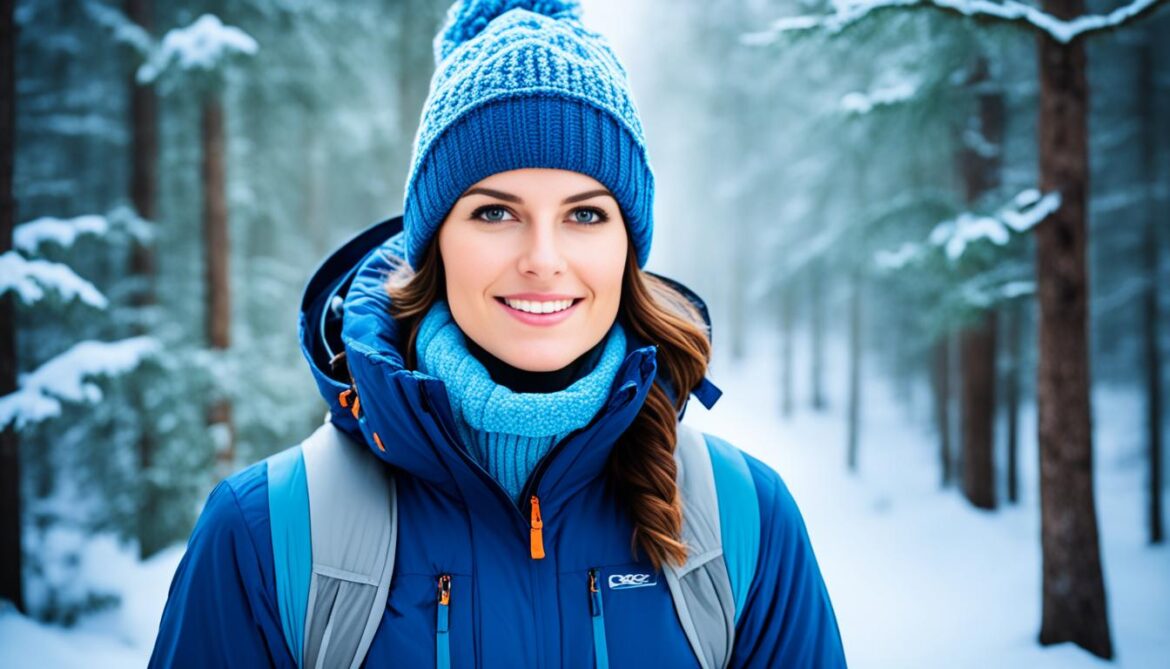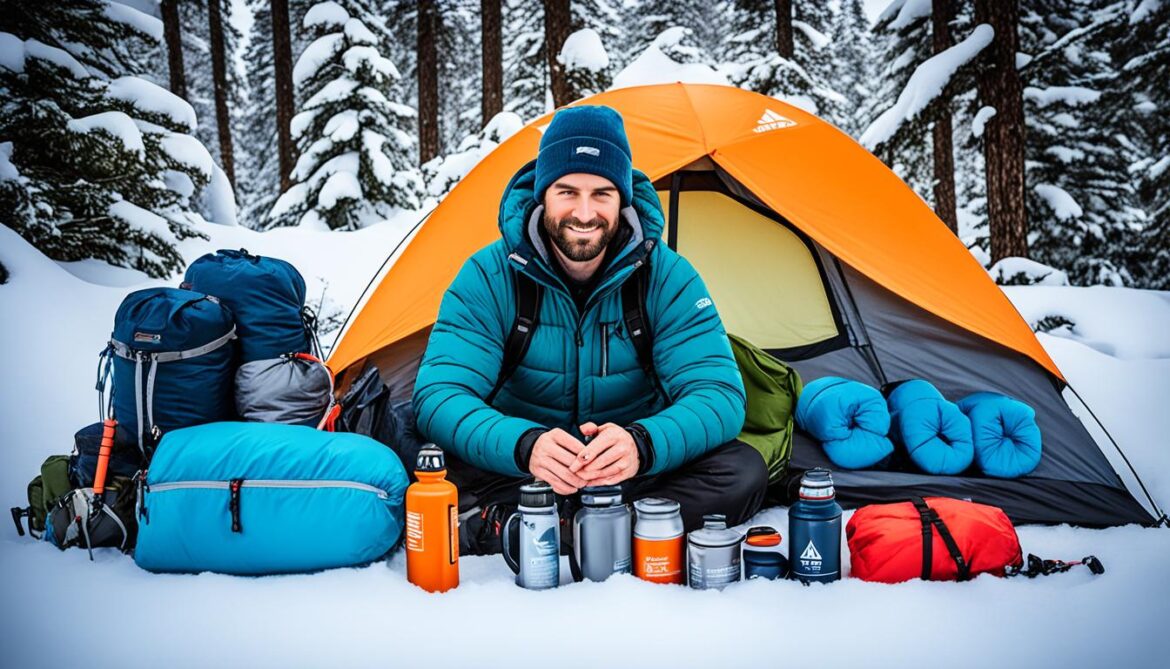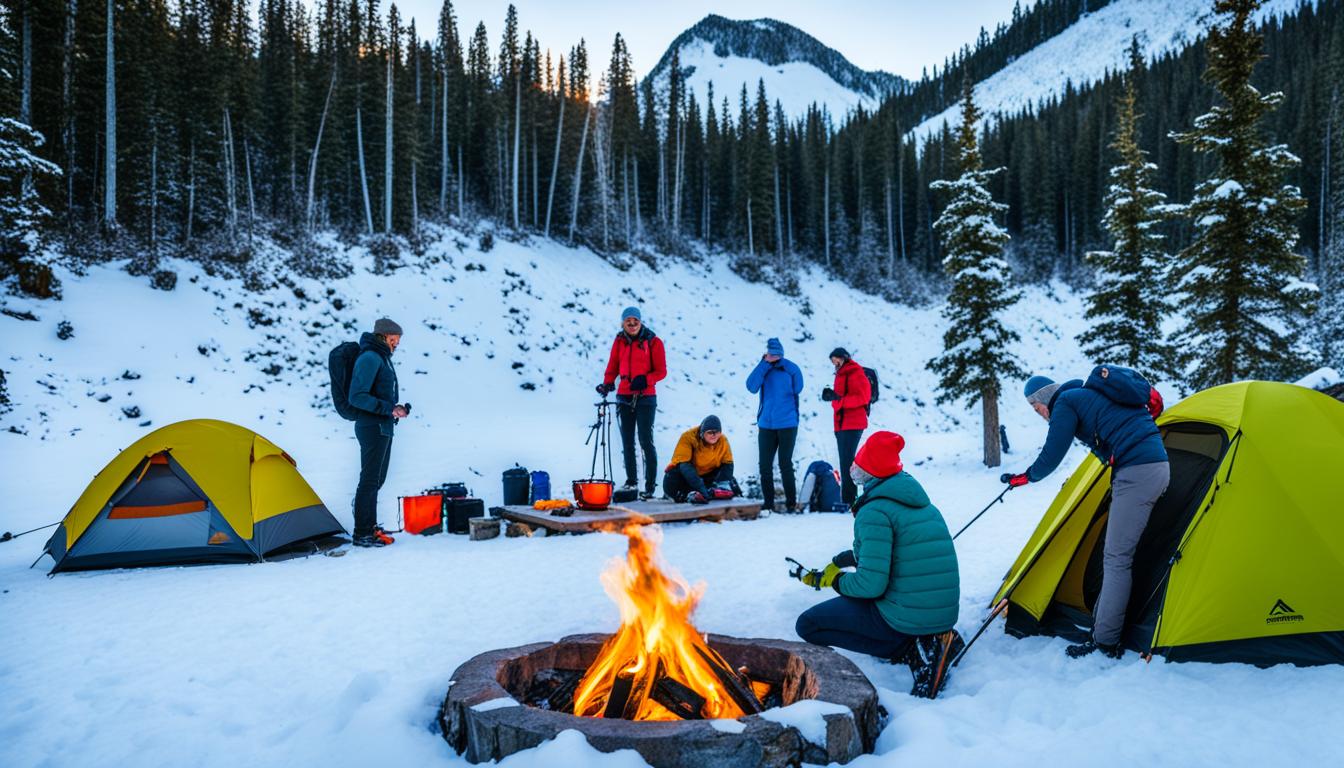Winter camping can be a thrilling and magical experience, but it also comes with its own set of challenges and risks. To ensure your outdoor adventures are safe and enjoyable, it’s essential to follow a few key safety rules. These rules will help you navigate the cold and unpredictable winter weather while keeping you cozy and protected.
In this article, we will explore six essential safety rules that you should keep in mind when camping during the winter season. Whether you’re a seasoned winter camper or a beginner, these rules will serve as a helpful reminder to stay prepared and make the most of your winter camping experience.
Dress Appropriately for Cold Weather Camping
When embarking on a winter camping adventure, proper clothing becomes paramount to ensure your safety and comfort. Dressing appropriately will help prevent hypothermia and frostbite, allowing you to fully enjoy the beauty of the great outdoors. In this section, we will explore key tips for dressing for cold weather camping, including the importance of layering, choosing the right materials, and packing essential items.
The Importance of Layering

Layering your clothing is essential for maintaining warmth in frigid temperatures. By wearing multiple layers, you create an insulating barrier that helps trap heat close to your body. Start with a moisture-wicking base layer, such as thermal underwear or a long-sleeved shirt, to keep sweat away from your skin. Add a middle layer, like a fleece or down jacket, for insulation. Finally, top it off with a waterproof and windproof outer layer, such as a shell jacket, to protect you from the elements.
Choosing the Right Materials
Investing in high-quality materials is crucial for cold weather camping. Opt for moisture-wicking and quick-drying fabrics that help regulate your body temperature and keep you dry, such as merino wool or synthetic blends. Avoid cotton, as it retains moisture and can leave you feeling cold and damp. Additionally, prioritize insulated jackets, hats, gloves, and boots specifically designed for cold weather conditions.
Packing Essential Items
When packing for cold weather camping, be sure to include the following essentials:
- Insulated jackets or parkas
- Thermal underwear
- Warm hats and gloves
- Thick socks
- Insulated and waterproof boots
- Neck gaiters or scarves
Remember that layering extends beyond clothing. Don’t forget to pack appropriate bedding, such as a warm sleeping bag and insulating sleeping pad, to keep you cozy during chilly nights.
By dressing appropriately for cold weather camping, you’ll be well-prepared to face the winter elements and enjoy your outdoor experience to the fullest.
Stay Prepared with the Right Gear
When embarking on a winter camping adventure, having the right gear is crucial for a safe and enjoyable experience. The frigid temperatures and harsh conditions require specialized equipment to ensure your comfort and well-being. In this section, we will explore the essential gear you need to pack for your winter camping trip.
Tent
A reliable tent is your first line of defense against the cold and unpredictable weather. Look for a four-season tent that is designed to withstand strong winds, heavy snowfall, and low temperatures. The tent should have a sturdy frame, waterproof materials, and proper insulation to keep you warm and dry throughout the night. Consider a tent with a vestibule for added storage space to store your gear and keep it protected from the elements.
Sleeping Bag
Invest in a high-quality sleeping bag that is specifically designed for winter camping. Look for a bag with a temperature rating suitable for the coldest temperatures you expect to encounter. Insulation is key, so opt for a sleeping bag with down or synthetic fill to provide excellent warmth retention. Additionally, ensure the sleeping bag has a hood to keep your head warm and prevent heat loss.
Sleeping Pad
A sleeping pad is essential for insulation and comfort. It acts as a barrier between you and the cold ground, providing insulation to keep you warm throughout the night. Look for a sleeping pad with sufficient thickness and insulation properties for the winter season. Choose a pad that is lightweight and compact for easy transportation.
Cooking Equipment
Having the right cooking equipment is essential for preparing warm meals and beverages during your winter camping trip. A sturdy camp stove, along with fuel canisters, will allow you to cook hot meals and quickly boil water for hot drinks. Don’t forget to pack lightweight cookware, utensils, and insulated containers to keep your food and drinks warm for longer.
First Aid Kit
In the event of any injuries or emergencies, a well-equipped first aid kit is a must-have. Pack essential items such as bandages, antiseptic ointment, pain relievers, and any necessary prescription medications. It’s also a good idea to include items specific to winter, such as heat packs for warmth and ice packs for potential injuries.
Emergency Communication Devices
When venturing into remote or unfamiliar winter camping locations, it is crucial to have reliable communication devices for emergencies. Carry a fully charged cell phone, a portable charger, and a two-way radio for communication with your camping companions or emergency personnel if necessary. Additionally, consider carrying a personal locator beacon (PLB) or satellite phone for reliable communication in areas with no cellular coverage.

| Essential Winter Camping Gear | Description |
|---|---|
| Four-Season Tent | A tent designed to withstand harsh winter conditions, with proper insulation and waterproof materials. |
| Sleeping Bag | A high-quality sleeping bag with suitable temperature rating, insulation, and a hood for added warmth. |
| Sleeping Pad | An insulated sleeping pad to provide warmth and comfort, acting as a barrier between you and the cold ground. |
| Cooking Equipment | Sturdy camp stove, fuel canisters, lightweight cookware, utensils, and insulated containers for preparing warm meals and beverages. |
| First Aid Kit | A well-equipped first aid kit with essential items for treating injuries and emergencies, including winter-specific items like heat packs and ice packs. |
| Emergency Communication Devices | Cell phone, portable charger, two-way radio, personal locator beacon (PLB), or satellite phone for reliable communication in remote or no cellular coverage areas. |
Practice Fire Safety and Campsite Etiquette
When camping in winter, building a fire can provide warmth and create a cozy atmosphere. However, it is vital to prioritize fire safety to prevent accidents and protect the environment. Follow these guidelines to ensure a safe and enjoyable experience:
First and foremost, always choose a designated fire pit or ring for your campfire. This helps contain the fire and minimize the risk of it spreading. Clear any debris or flammable materials from the area around the fire pit to create a safe zone.
Next, use proper fire-building techniques. Start with small dry twigs and gradually add larger pieces of wood. Avoid using accelerants such as gasoline, as they pose a significant risk of uncontrollable flames. Always keep a bucket of water or sand nearby to extinguish the fire completely before leaving the campsite or going to bed.
Additionally, it is essential to select the right type of firewood. Use only locally sourced firewood to prevent the spread of pests and diseases. Dead, fallen branches and logs are ideal choices as they are dry and easily combustible. Respect the environment by not cutting down live trees for firewood.
Lastly, practice campsite etiquette by being considerate of other campers and the environment. Keep noise levels to a minimum, especially during quiet hours. Respect the natural surroundings by not disturbing wildlife or damaging vegetation. Dispose of waste properly in designated containers or by packing it out. By following these fire safety guidelines and demonstrating campsite etiquette, you contribute to a safer and more enjoyable camping experience for everyone.

